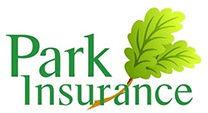Owning a horse is an expensive business. From the actual cost of the animal through to feed, tack, livery charges or stabling, blankets and even bandages, everything adds up. And one of the biggest additional costs will be a horsebox and everything that goes along with it, including horsebox insurance.
A box, even a small, hitch-and-tow two-stall box, could run into thousands of pounds, so making a mistake could prove to be very expensive. The stakes are even higher if you decide to buy a motorised horsebox, so over the next couple of weeks we’ll be looking at the 10 most important things you need to check before you buy.
This week – hitch-and-tow boxes:
#1 – Is it big enough?
Don’t be fooled into thinking that there’s only one size of hitch-and-tow horsebox. They can come in different sizes, the most obvious difference being a one or two-stall box. Obviously, if you only have the one small pony to move (around 13-14 hands), then a single stall box should be quite sufficient. However, you’ll still need to carry all the appropriate kit with you too, so even if you do decide to go for the smallest box available, make sure there is adequate room for your horse and your tack.
You should also ensure that the vehicle you’ll be towing the box with is sufficiently powerful to do so with ease.
#2 – Is it stolen?
Over the past few years the number of horseboxes being stolen and sold on has increased. Responsible owners are therefore taking steps to protect their property and are marking them. For example, Ifor Williams, who manufacture horsebox trailers, have a serial number stamped on the top of the right hand drawbar A-frame. You can check that code with their customer services department and they may be able to tell you if a trailer has been reported as stolen or whether the person selling it to you is the same person who bought the trailer from them in the first place. Obviously, this will only apply to ‘short-chain’ sales (buying from a person who bought the trailer as new), but it can help.
One good tip – if the person you’re buying from wants to meet you somewhere away from their home address, then alarm bells should start ringing!
#3 – What is the condition of the sub-frame?
The sub-frame supports the entire weight of the trailer and everything inside, including the animal! Look for signs of stress and/or rust, particularly around joints or anywhere that has been welded. Fresh welds could indicate a deeper problem with the integrity of the frame.
#4 – Are the panels and gate in good condition?
Horseboxes with wooden panels do suffer wear and tear, and if the wood hasn’t been treated properly then it can start to degrade quite quickly. Look for any crumbling that may indicate rot has penetrated into the wood (especially on the ramp and the floor of the box), or wood that, even if the paint is fresh, feels ‘soft’ to the touch. Remember that the condition of the box could cause a problem for you when you are looking for comprehensive horsebox insurance cover, particularly in older boxes.
#5 – What additional costs could you face?
Other costs could include:
- Replacing worn or damaged tyres
- Repairing faulty hydraulics, particularly for the braking system
- Repairing or replacing electrical faults (remember that internal lights also need to be operational, as well as your display lights outside such as brake lights, tail lights and indicators)
- The cost of horsebox insurance to protect your investment – talk to a specialist broker for more advice.
Next week we’ll take a look at the five things you need to know before buying a motorised horsebox.
